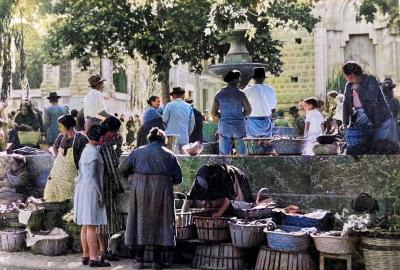How did the presence of pirates shape the development of trade routes connecting Mallorca with other Mediterranean ports?
Similar Topics
pirates mediterranean trade
mallorca trade routes
piracy impact trade
fortified harbors mallorca
mediterranean pirate threats
merchant fleet defenses
trade route adaptation
seasonal trading voyages
The presence of pirates in the Mediterranean during the medieval and early modern periods had a significant impact on the development of trade routes connecting Mallorca with other ports. As a strategically located island in the Balearics, Mallorca was both a valuable trading hub and a target for seafaring raiders. The threat of piracy encouraged merchants and sailors to adapt their routes and schedules to minimize exposure to pirate attacks. Consequently, trade routes often shifted to follow safer, more circuitous paths, avoiding known pirate hotspots or times when pirate activity was at its peak.
In response to these threats, Mallorcan authorities and merchant fleets invested in fortified harbors and armed convoys to protect commercial vessels. Ports on the island developed stronger defensive structures such as watchtowers and fortified docks, enabling safer mooring and loading processes. Additionally, the island’s maritime networks became more organized, with communities relying on intelligence sharing about pirate movements to anticipate and evade raids. These measures collectively fostered a climate of cautious but persistent trade, as Mallorca sought to maintain its economic connections despite the ever-present danger at sea.
Piracy also influenced the type of goods transported and the timing of voyages. Merchants often prioritized high-value but easily securable goods that could quickly be loaded and unloaded, reducing the time ships spent vulnerable in port or along the routes. Seasonal travel became more common, with trading ships timing their journeys to coincide with more favorable weather and reduced pirate activity. Over time, this cautious approach contributed to the establishment of well-charted, reliable routes that balanced efficiency with safety, allowing Mallorca to sustain and expand its maritime commerce within the competitive and often perilous Mediterranean basin.
In response to these threats, Mallorcan authorities and merchant fleets invested in fortified harbors and armed convoys to protect commercial vessels. Ports on the island developed stronger defensive structures such as watchtowers and fortified docks, enabling safer mooring and loading processes. Additionally, the island’s maritime networks became more organized, with communities relying on intelligence sharing about pirate movements to anticipate and evade raids. These measures collectively fostered a climate of cautious but persistent trade, as Mallorca sought to maintain its economic connections despite the ever-present danger at sea.
Piracy also influenced the type of goods transported and the timing of voyages. Merchants often prioritized high-value but easily securable goods that could quickly be loaded and unloaded, reducing the time ships spent vulnerable in port or along the routes. Seasonal travel became more common, with trading ships timing their journeys to coincide with more favorable weather and reduced pirate activity. Over time, this cautious approach contributed to the establishment of well-charted, reliable routes that balanced efficiency with safety, allowing Mallorca to sustain and expand its maritime commerce within the competitive and often perilous Mediterranean basin.
🧩 Related Questions
Related Question
In what ways does the energy consumption of desalination plants affect Mallorca's carbon footprint?
Related Question
How does the freshness of local produce influence the quality of Trempo in Mallorca?
Related Question
How should travelers prepare for weather differences when visiting both the Serra de Tramuntana and the drier southeastern areas?


